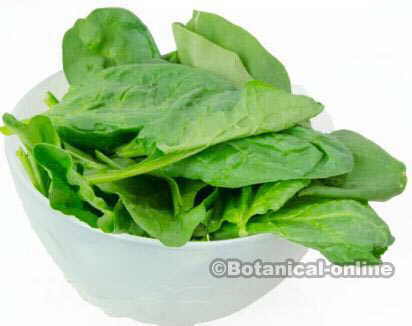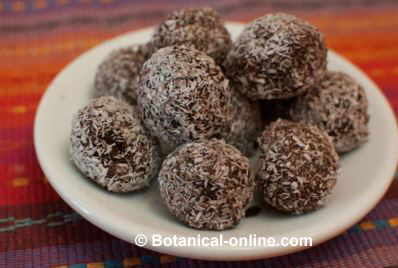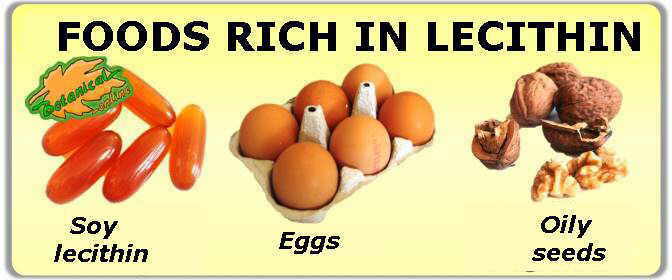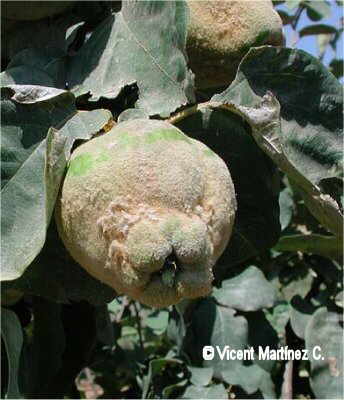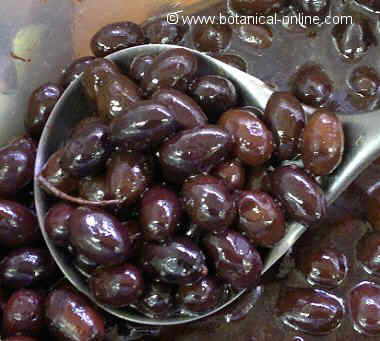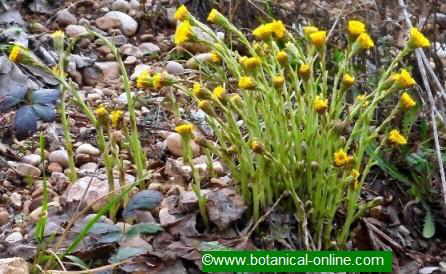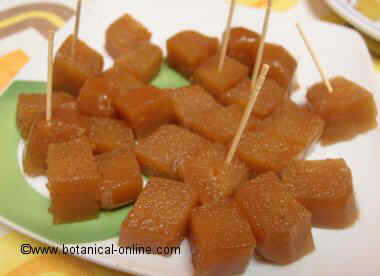Contents
How to grow persimmon
![]()
Persimmon, plant
Persimmons reach between 5 and 17 meters high, but usually their height is over 10 meters and its top reaches about 5 or 6 meters in diameter. Leaves alternate, oval, hard, about 13 to 15 cm long, bright green to golden yellow to become the fall.
Female flowers of creamy yellow that spring from the axils of the leaves individually. The male flowers are pink in color and are grouped into groups of 3.
The fruit, also called persimmon, is an oval berry that can reach up to half a kilo. The exterior is smooth, which can vary in color from yellow to orange. Inside, we find the the pulp, with a gelatinous and soft texture.
Pollinated trees produce fruit containing up to 8 seeds. They are bigger and sweeter than those that do not contain seeds, and many can be eaten once collected directly from the tree when they are ripe.
The seedless fruits of flowering trees are only female. The have been produced by parthenogenesis (= They are formed by division of unfertilized female cells).
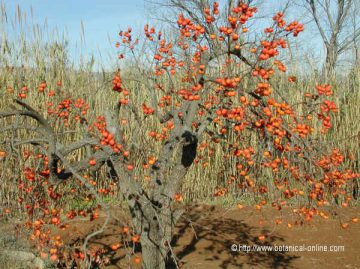

Persimmon, watering
Although it is fairly drought tolerant, it is better to provide a regular watering at the time of fruiting to achieve good fruit size and quality. A light watering every 20 days during the summer will be enough.
A too dry weather for a long period of time may hasten the fall of leaves and fruits.
On the other hand, it does not tolerate waterlogging that causes root rot. Persimmons should, therefore, be planted in a soil with good drainage.
![]()
Persimmon, uses and varieties
Persimmons are fruit trees. They are used for fruit production. Depending on the type of fruit, we must distinguish the following varieties:
- Varieties always producing astringent fruits: Those should either be eaten when fully ripe and soft to be sweet or undergo a process of removing astringency before eating if you have not picked them fully ripe.
If eaten when they are hard, they are very rough, as the variety “Bright Red”. They can be produced by parthenogenesis from unfertilized female single copies or by fertilized female individuals.
- Varieties always producing non-astringent fruits: those that produce fruit that can be eaten when they are hard because they do not have astringency, as the variety “Sharon”.
- Varieties producing astringent or non-astringent fruits according to fertilization: Those whose astringency varies depending on whether or not they are fertilized. If not fertilized, they produce astringent fruits with few seeds in the fruits. If they have been fertilized, they are not astringent and they produce fruits with few or no seeds. The same variety may have the presence or absence of astringency as fertilization.
(More information on species and varieties of persimmons)
![]()
Persimmon, temperature and exposure
Persimmons need sunny sites when adult. Actually, they are subtropical plants but they can be adapted in temperate climates. To develop their fruits they need hot weather in summer.
While they are young, they can remain and even grow in partial shade.
When winter comes, they supports very well the cold and can withstand temperatures down to -15 º C. Low temperatures, when the leaves have fallen, help the ripening of fruit, which remain for some time in the trees. In some varieties the fruits can withstand the trees until early winter.
It is not good when the leaves remain on a tree in cold weather, since these may freeze more easily and can not withstand more than -1 º C. The appearance of a cold period in spring can damage them easily.
Persimmons do not support high winds, because its wood, though it is hard, is very brittle and can be easily broken when the wind blows, especially back in late September or early October when many trees are still well loaded with the weight of the abundant fruits.
![]()
Persimmons, Types of soil and fertilizer
Persimmons tolerate any soil, provided that they have a good drainage. If watering is correct, they can even live in clay or sandy soils, although they prefer loamy soils.
Loamy soils are those made of clay, silt and sand with plenty of decomposed vegetable matter (humus). These soils are dark and light.
As for pH, persimmons prefer not too much acid or too much alkaline soils. The ideal would be a pH between 6 and 6.5, although they can tolerate up to 7.5.
Fertilization should be moderate. It can be done by adding fertilizer in spring when the soil is poor. An excess of nitrogen may be responsible for the fruit to fall.
Too much lime can be responsible for chlorosis. It must also be taken into account the levels of magnesium and manganese.
![]()
Persimmons, reproduction, planting and pruning
Persimmons can be reproduced in any of the following ways:
– Reproduction by seed: Persimmons can be reproduced after sowing the clean seeds in their final location. However, it is more convenient to make a cold seedbed.
For a better seed germination, seeds should be stratified to the cold. (They must be placed in the refrigerator – not in the freezer – from 15 to 40 days. Then, they will be sowed in the seedbed and will be watered properly, leaving them at a temperature of 15 ° C.
Germinated seeds are sown between the first and sixth month. Once they have germinated and they can be handled, the seedlings will be transplanted in pots to be protected from the cold. Transplantation to their final place will take place in early summer, when there is no risk of frost.
The trees should be planted within 4 to 6 meters distance between them. (Most commonly 5×6 or 6×6, when the tree has been subjected to pyramid pruning; 3×5 in vase pruning or when cane pruning.
– Reproduction by grafting on rootstock : It is the most common way to reproduce persimmons. Rootstocks can be purchased from specialized nurseries. The most common are Diospyros lotus, Diospyros virginiana and Diospyros kaki. On these rootstocks, scions will be inserted in the early spring.
It is necessary to make a big hole to keep enough humidity until the new plant has rooted. Rootstocks must also be supported with stakes to get a vertical growth and prevent the wind to uproot them.
– Reproduction by layering: The layers are performed on the suckers that spring from the roots in spring.
– Reproduction by cuttings: from semi-hardwood cuttings in summer.
How to prune persimmons?
– Formation pruning: Persimmons may require pruning while young. This way will give them the right aspect as they grow. they are often given the form by means of vase-pruning, but also sometimes by cane pruning or irregular pyramid pruning.
When pyramid pruning, growing upwards is intended, so that the central branch is the dominant and the other branches are grown in staggered floors, arranged irregularly on all sides of the main shaft at an angle of 45 degrees.
It is a kind of pruning that needs between 4 and 6 years to be accomplished. It produces very high trees. In the case of persimmon, we need to tie the side branches so they do not break. It is a type of pruning widely used in fruit trees such as pears, walnuts, cherries, etc.
When cane pruning, we intend to form trees in which the secondary branches go out at a distance from half a meter to 80 cm in groups of 2, one on each side of the axis, with slightly obtuse angle, starting from from 2 to 4 meters from the soil in the main trunk.
In this type of pruning, it takes 4 to 6 years to complete the tree shape. It is the most commonly used for apple trees and pear trees.
Vase pruning intends to conduct a vertical tree trunk one meter high approximately from which three vertical branches arise around them. From these three branches, and placed at a distance from 60 to 100 cm, we will have 2 or 4 branches that arise on either side of the main branch.
This type of pruning requires a period of 3 to 5 years to take place and produces trees with a very large size and a very clean interior. It is a very common type of pruning to trees like olive trees, apple trees, almond trees, pear trees, etc.
– Clearing pruning : As trees become adults, they may need pruning to clear them in the center, so that harvesting the fruits can be easier.
When the tree is hard working and produces many fruits, it is appropriate to prune the thinner branches to prevent these from breaking under the weight of the fruits.
![]()
Persimmons. maintenance: weeding and thinning of fruit
In addition to pruning, it is necessary to perform a few tasks for the trees to be healthy and to produce good quality and good sized fruits. We will weed them to clean the surface of grass the a tree covers with its branches.
This task will prevent weed competition and will save nutrients. Thinning the fruit is aimed to remove the excess of fruits so that the remaining fruits can become larger and better and also to avoid their excess could break the branches.
![]() More information on persimmon.
More information on persimmon.

